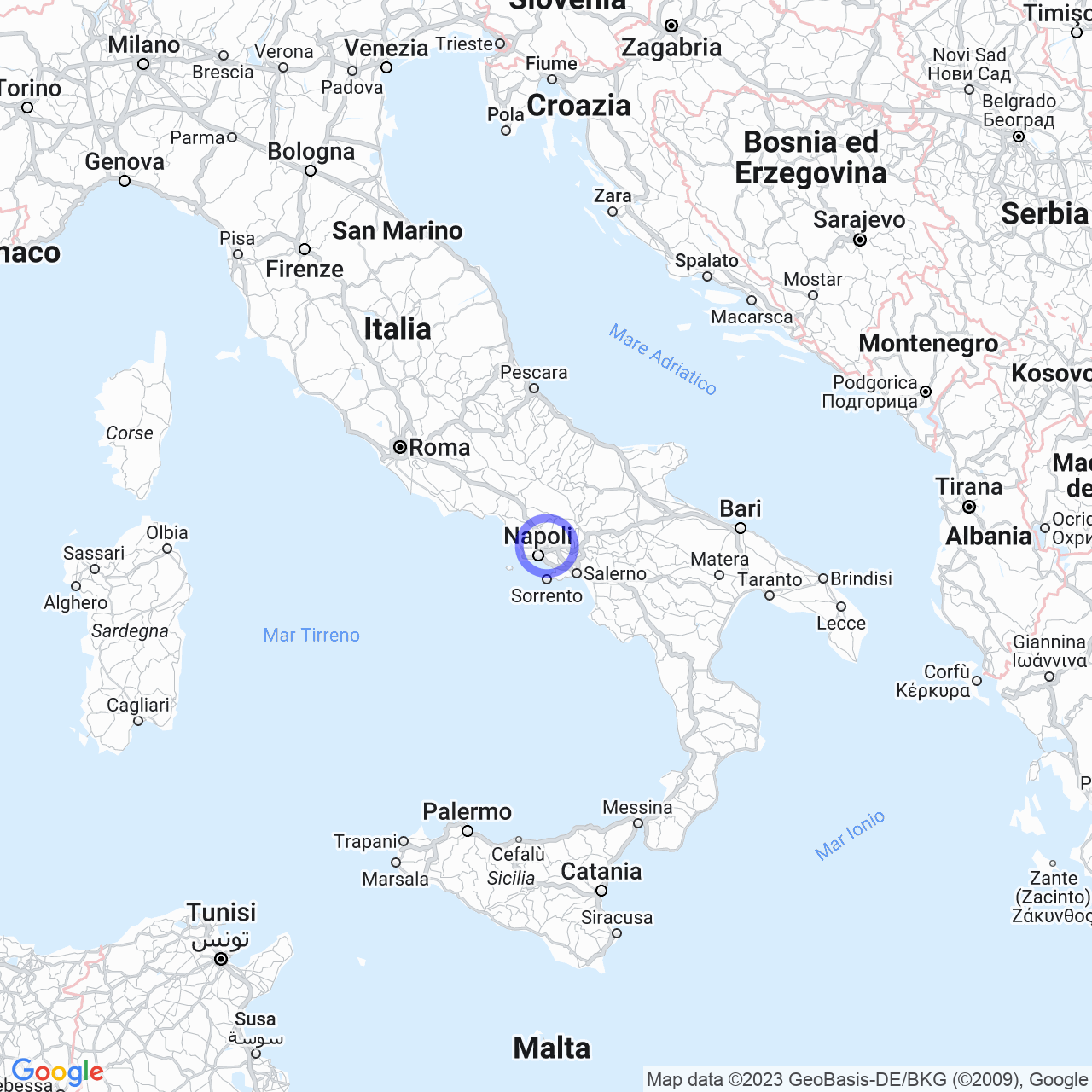Acerra
Acerra: a welcoming and rich in history Campanian city
Acerra is a city located in the north-eastern quadrant of the Neapolitan hinterland, about 14 kilometers northeast of Naples. The municipality hosts a vast plain area, the third largest after Naples and Giugliano in Campania, and has a population of 58158 inhabitants. Acerra borders the province of Caserta and the Nolana Area, and is directly connected to the A1, A30, A16 and A3 by the SS 162 NC Asse Mediano.
Physical geography
The city stands out for its privileged position and the great presence of rural areas. Two important industrial zones, Acerra and Pomigliano d'Arco, develop productive activities important for the local economy. The municipality is served by two railway stations: Stazione di Acerra (RFI) and Stazione di Acerra (Circumvesuviana).

Climate
Acerra's climate is characterized by the liveliness of the summer and winter seasons, with average temperatures of +24.7 °C in August and +8.7 °C in January respectively. The presence of freezing days (on average 8 per year) and temperatures above 30 °C (on average 41 days per year) make the climate of the city particularly varied and unpredictable.
History
Acerra is a city with a millenary history. A forge of ancient cultures and civilizations, the city was already inhabited in prehistoric times. According to recent archaeological research, Acerra was founded by the Ausoni, and then called by the Osci with the name of ''Akeru''. The name "Acerrae" (in Latin) probably derives from the term "acerium" (acery). In 332 BC, the city was the first of the Roman provinces to obtain the ''civitas'' without the right to vote.
A common linguistic root
There is still no certainty about the linguistic roots of the name of the city, but it is interesting to note how the suffix "-cerro" is present in numerous Italian localities (such as Nocera, Pomaro, Cerreto, and Melito). It is a suffix that could have common Latin origins, linked to the presence of oak and apple orchards.
The beauty of Acerra
Acerra is a city rich in artistic and landscape beauties. The city has often been described as a hidden gem in Campania. Among the historical treasures of the municipality are the Chiostro di Sant'Anna, the church of Santa Maria di Costantinopoli, the Torre dell'Orologio, and the church of San Giovanni Battista. The city also boasts naturalistic areas of great charm, such as the Parco di San Baio and the Riserva Naturale Orientata del Monte Polveracchio.
The welcome of peace messengers
One of the most significant moments in the history of Acerra is linked to World War II. On September 23, 1943, the city was chosen as the seat of the Acerra Conference, a meeting between representatives of the Allied forces and those of the South Kingdom, aimed at establishing the conditions of peace for the Italian territory. The city of Acerra, thanks to its peaceful hospitality, was chosen as the ideal place for this important event.
Acerra today
Today, Acerra is a city that looks to the future, with a strong vocation for innovation and the environment. The city is dedicated to numerous cultural and social development activities, including the enhancement of historical and artistic heritage and the promotion of projects in favor of environmental sustainability.
The weekly market
Among the relevant cultural activities, the weekly market of Acerra has a prominent position. This popular market takes place every Wednesday and stands out for the wide range of local, artisanal, and gastronomic products.
Attention to greenery
Acerra has undertaken various initiatives in favor of environmental sustainability. One of the most successful projects is the "Giardino dei Semplici", a green area that hosts more than 300 species of autochthonous plants from Campania. The municipality also promoted the "Clean Up the World" campaign, aimed at raising awareness of the need to preserve the environment.
In conclusion, Acerra is a city with a rich past and a promising future. The city offers numerous points of interest for anyone who wants to get to know Campania and its millenary culture. The beauty of its artworks, the liveliness of its economy, and the commitment to environmental sustainability make it a welcoming city and an ideal place for a pleasant and cultural stay.
